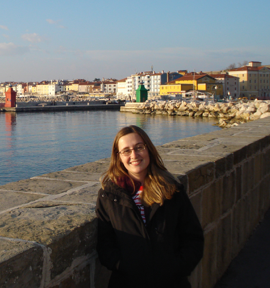I am a post-doctoral researcher at University of Sao Paulo (USP), Brazil, and I am currently in New Zealand (Massey University) for an internship funded by the Sao Paulo Research Foundation (FAPESP). During my PhD in Brazil (USP), I studied the traditional family Campanulariidae, now suborder Proboscoida (Cnidaria,
Hydrozoa), a group of beautiful hydroids that have individual polyps sitting in cuplike thecae. Though easily overlooked, they are important
members of marine benthic communities, and occur on a
great variety of natural and artificial substrates. The diversity of species in this group, however, is still uncertain since many of the species described have a doubtful taxonomic status.
This
group is notorious for having a “difficult” taxonomy. The difficulties for delimiting species are mainly a result of their wide morphological variation. For example, take a look at the variation of perisarc thickness. This wide morphological variation has been hypothesized to result from phenotypic plasticity, but we still do not understand how and if phenotypic plasticity can explain evolutionary patterns in the group. |

|
Publications:
AF Cunha, PK Maruyama, GB Jacobucci. 2018. Epiphytic hydroids (Cnidaria, Hydrozoa) contribute to a higher abundance of caprellid amphipods (Crustacea, Peracarida) on macroalgae. Hydrobiologia 808 (1), 251-264
AF Cunha, AG Collins, AC Marques. 2017. Phylogenetic relationships of Proboscoida Broch, 1910 (Cnidaria, Hydrozoa): Are traditional morphological diagnostic characters relevant for the delimitation of lineages at the species, genus, and family levels?
Molecular Phylogenetics and Evolution 106, 118-135.
AF Cunha, MM Maronna, AC Marques. 2016. Variability on microevolutionary and macroevolutionary scales: a review on patterns of morphological variation in Cnidaria Medusozoa. Organisms Diversity & Evolution 16 (3), 431-442.
OMP Oliveira, TP Miranda, EM Araujo, P Ayon, CM Cedeno-Posso, 2016. Census of Cnidaria (Medusozoa) and Ctenophora from South American marine waters. Zootaxa 4194 (1), 1-256
TP Miranda, AF Cunha, AC Marques. 2016. Status of the names of some hydroid species (Cnidaria, Hydrozoa), described from the Atlantic coast of Patagonia. Zootaxa 4171 (3), 595-600.
AF Cunha, PT Fujimura, PK Maruyama, E Alves-Silva, GB Jacobucci. 2015. Preferências e interesse do público em atividades não formais de ensino: um estudo de caso com a temática sistema nervosa. Educação Básica Revista 1 (1), 95-106.
AF Cunha, GN Genzano, AC Marques 2015. Reassessment of morphological diagnostic characters and species boundaries requires taxonomical changes for the genus orthopyxis L. Agassiz, 1862 (campanulariidae, hydrozoan). PloS one 10 (2), e0117553
TP Miranda, A Cunha, AC Marques. 2013. Taxonomic position of Lovenella gracilis (Clarke, 1882)(Lovenellidae, Hydrozoa): new evidences of microanatomy justify its maintenance in the genus Lovenella (Hincks, 1868). Latin American Journal of Aquatic Research 41 (2), 286-295 3
PK Maruyama, C Mendes-Rodrigues, E Alves-Silva, AF Cunha. 2012. Parasites in the neighbourhood: Interactions of the mistletoe Phoradendron affine (Viscaceae) with its dispersers and hosts in urban areas of Brazil. Flora-Morphology, Distribution, Functional Ecology of Plants 207 (10), 768-773
PK Maruyama, AF Cunha, E Tizo-Pedroso, K Del-Claro. 2010. Relation of group size and daily activity patterns to southern lapwing (Vanellus chilensis) behaviour. Journal of ethology 28 (2), 339-344
AF Cunha, GB Jacobucci. 2010. Seasonal variation of epiphytic hydroids (Cnidaria: Hydrozoa) associated to a subtropical Sargassum cymosum (Phaeophyta: Fucales) bed
Zoologia (Curitiba) 27 (6), 945-955.
FLR Cunha, AF Cunha, GB Jacobucci. 2009. Is the occurrence of caprellid amphipods associated with Sargassum (Phaeophyta) influenced by algal and hydrozoan epibiosis?
Revista Brasileira de Zoociências 10 (3). |
|